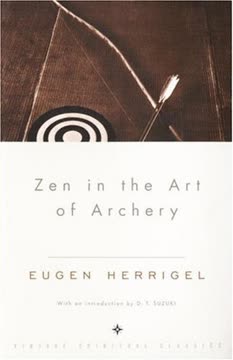Key Takeaways
1. Archery as a Path to Zen: Beyond Sport
By archery in the traditional sense, which he esteems as an art and honours as a national heritage, the Japanese does not understand a sport but, strange as this may sound at first, a religious ritual.
More than just a sport. In Japan, traditional archery transcends mere physical exercise; it's a spiritual practice deeply intertwined with Zen Buddhism. The goal isn't just hitting a target, but achieving a state of inner peace and self-discovery. This approach transforms archery from a contest of skill into a ritual of self-improvement.
Spiritual goal. The archer aims at a spiritual goal, seeking to hit himself, becoming both the aimer and the aim. This reflects the Zen concept of unity, where the self dissolves into the act. The bow and arrow become tools for inner exploration, not just instruments for external achievement.
Zen's influence. Zen Buddhism emphasizes direct experience and intuition over intellectual understanding. Archery, under Zen's influence, becomes a path to experiencing this directness, bypassing the mind's chatter and connecting with a deeper reality. This connection is what elevates archery to an art form.
2. The Master's Way: Guidance and Patience
A great Master ", he replied, " must also be a great teacher.
The role of the Master. The Master is not just a skilled archer but a guide who understands the pupil's inner state. They provide personalized instruction, knowing when to push and when to hold back. This deep understanding is crucial for the pupil's progress.
Patience and observation. The Master observes the pupil's struggles, allowing them to learn through their own efforts before offering guidance. This approach fosters self-reliance and a deeper understanding of the art. The Master's patience is a testament to their commitment to the pupil's growth.
Beyond technique. The Master's guidance extends beyond technique, encompassing the spiritual and mental aspects of archery. They help the pupil cultivate the right mindset, emphasizing qualities like focus, patience, and detachment. This holistic approach is what distinguishes a true Master.
3. Breath Control: The Source of Spiritual Strength
Press your breath down gently after breathing in, so that the abdominal wall is tightly stretched, and hold it there for a while.
Breathing as foundation. Proper breathing is fundamental to archery, serving as the source of spiritual strength and relaxation. It's not just about physical technique but about connecting with one's inner energy. This connection is what allows the archer to draw the bow with effortless power.
Rhythm and focus. The archer learns to synchronize their breathing with the movements of drawing and releasing the arrow. This creates a rhythmic flow that enhances focus and concentration. The breath becomes a tool for centering the mind and body.
Mind-body connection. Breath control bridges the gap between the mind and body, allowing the archer to access a deeper level of awareness. This awareness is what enables them to perform with precision and grace. The breath becomes a pathway to spiritual insight.
4. Loosing the Shot: Effortless Action
The shot will only go smoothly when it takes the archer himself by surprise.
Beyond conscious control. Loosing the shot is not about deliberate action but about allowing the shot to release itself. This requires a state of mental and physical relaxation, where the archer becomes a conduit for the shot. The shot becomes an expression of inner harmony.
The child analogy. The Master uses the analogy of a child holding a finger to illustrate the effortless release of the shot. The child doesn't consciously decide to let go; it simply happens. This spontaneity is what the archer strives to achieve.
Waiting for the moment. The archer must learn to wait for the right moment, allowing the tension to build until the shot releases itself naturally. This requires patience and trust in the process. The shot becomes a manifestation of the archer's inner readiness.
5. Waiting and Letting Go: The Key to Mastery
You must learn to wait properly.
Purposeless tension. Waiting is not passive but an active state of readiness. It involves letting go of the ego and surrendering to the moment. This requires a deep trust in the process and a willingness to relinquish control.
The bamboo leaf analogy. The Master uses the image of a bamboo leaf bending under the weight of snow to illustrate the concept of waiting. The leaf doesn't try to shake off the snow; it simply waits until the snow falls naturally. This is the essence of effortless action.
Beyond the will. The archer must transcend the limitations of the will, allowing the shot to happen without conscious effort. This requires a shift in perspective, from doing to allowing. The shot becomes an expression of the archer's inner stillness.
6. The Art of Imitation: Skill and Spirit
Imitation, no longer applied to objective contents which anybody can copy with a little good will, becomes looser, nimbler, more spiritual.
Copying as foundation. Initially, the pupil learns by meticulously copying the Master's movements. This develops technical skill and a deep understanding of the art's form. However, imitation is just the beginning.
Beyond technique. As the pupil progresses, imitation evolves into a more spiritual practice. It's no longer about replicating external forms but about embodying the Master's spirit. This requires a deep connection and a willingness to surrender to the process.
Inner work. The pupil must turn themselves into the raw material of training, shaping their character and spirit. This inner work is what transforms skill into mastery. The art becomes a reflection of the archer's inner state.
7. The "It": Transcending the Ego
"It" shoots," he replied.
The mysterious "It". The Master refers to the force behind the shot as "It," a concept that transcends the ego. This "It" is the source of effortless action and spiritual insight. Understanding "It" is the key to mastery.
Beyond personal agency. The archer must realize that they are not the doer but a vessel for "It." This requires a relinquishing of control and a surrender to a higher power. The shot becomes an expression of this transcendent force.
The path to Zen. The concept of "It" is closely aligned with Zen Buddhism's emphasis on emptiness and non-duality. By understanding "It," the archer moves closer to experiencing the essence of Zen. The art becomes a path to enlightenment.
8. The Target: Inner and Outer Alignment
You must act as if the goal were infinitely far off.
Beyond the physical target. The physical target is merely a symbol of the inner goal. The archer must focus on aligning their inner state with this goal, rather than fixating on the external outcome. This alignment is what leads to true mastery.
Spiritual distance. The archer must act as if the target is infinitely far off, emphasizing the importance of the journey over the destination. This requires patience and a willingness to embrace the process. The art becomes a metaphor for life's journey.
Inner and outer correspondence. The archer's ability to hit the target is a reflection of their inner state. When the inner and outer are aligned, the shot becomes effortless and precise. The art becomes a mirror of the archer's soul.
9. The Test: Mastery and Beyond
You have now reached a stage where teacher and pupil are no longer two persons, but one.
Demonstrating mastery. The test is not just about demonstrating technical skill but about showcasing the archer's spiritual development. It requires maintaining composure and focus in the presence of spectators. The test becomes a rite of passage.
Unity of teacher and pupil. The Master states that at a certain stage, the teacher and pupil become one. This reflects the deep connection and shared understanding that develops over years of training. The art becomes a bond that transcends physical separation.
The artless art. The ultimate goal is to reach the "artless art," where the archer transcends technique and acts from a place of pure intuition. This requires a complete integration of skill and spirit. The art becomes a path to self-realization.
10. Swordsmanship: A Parallel Path to Zen
The Japanese fencing master sometimes uses the Zen method of training.
Swordsmanship as Zen practice. Like archery, swordsmanship can be a path to Zen enlightenment. It requires the same qualities of focus, patience, and detachment. The sword becomes a tool for self-discovery.
Transcending technique. The swordsman must move beyond conscious technique and act from a place of pure intuition. This requires a relinquishing of control and a surrender to the moment. The art becomes an expression of inner harmony.
The unmoved understanding. The Zen master Takuan's treatise on swordsmanship emphasizes the importance of "unmoved understanding." This refers to a state of mental stillness and clarity that allows the swordsman to react spontaneously and effectively. The art becomes a path to spiritual insight.
Last updated:
FAQ
What is "Zen in the Art of Archery" by Eugen Herrigel about?
- Exploration of Zen through Archery: The book chronicles Eugen Herrigel’s six-year journey learning Japanese archery (kyūdō) as a means to understand Zen Buddhism.
- Personal Experience as a Lens: Herrigel uses his own struggles and breakthroughs as a Western student to illustrate the spiritual and philosophical dimensions of Zen.
- Art as Spiritual Practice: The narrative demonstrates how archery, far from being a sport, is a spiritual discipline aimed at self-mastery and egolessness.
- Bridge Between East and West: The book serves as an introduction for Western readers to the elusive and paradoxical nature of Zen, using archery as a concrete example.
Why should I read "Zen in the Art of Archery" by Eugen Herrigel?
- Unique Perspective on Zen: Herrigel offers a rare, firsthand account of learning Zen through a traditional Japanese art, making abstract concepts more accessible.
- Insight into Mastery: The book provides deep insights into the process of mastery, discipline, and the transformation of self through practice.
- Cross-Cultural Understanding: It bridges cultural gaps, helping readers appreciate the differences between Western and Eastern approaches to learning and spirituality.
- Inspiration for Personal Growth: Readers interested in mindfulness, meditation, or any art form can find practical and philosophical guidance for their own journeys.
What are the key takeaways from "Zen in the Art of Archery" by Eugen Herrigel?
- Letting Go of the Ego: True mastery in any art requires the practitioner to become egoless and act without conscious self-interference.
- The Artless Art: The highest form of art is achieved when technique becomes so internalized that action happens spontaneously, without deliberate effort.
- Importance of the Master-Student Relationship: Progress depends on the guidance of a master who knows when to intervene and when to let the student struggle.
- Spiritual Practice in Everyday Actions: Zen can be realized through any activity—archery, painting, flower arranging—when approached with the right spirit.
How does Eugen Herrigel define the relationship between Zen and archery in "Zen in the Art of Archery"?
- Archery as Spiritual Exercise: Herrigel explains that, in Japan, archery is not a sport but a religious ritual and spiritual discipline.
- Hitting the Spiritual Target: The true aim is not the physical target, but the archer’s own self—achieving a state where the archer, the bow, and the target become one.
- Zen Principles Embodied: The process of drawing, aiming, and releasing the arrow becomes a metaphor for Zen’s core teachings: detachment, presence, and egolessness.
- Art as a Path to Enlightenment: Archery serves as a preparatory school for Zen, allowing practitioners to experience Zen’s mysteries through physical action.
What is the "artless art" as described in "Zen in the Art of Archery" by Eugen Herrigel?
- Spontaneity Over Deliberation: The "artless art" refers to a state where the archer acts without conscious thought or intention, allowing the action to happen naturally.
- Mastery Beyond Technique: It is the point where technical skill is so deeply internalized that it becomes second nature, and the artist becomes a vessel for the art.
- Paradox of Effortlessness: True effortlessness is achieved only after long, disciplined practice and the surrender of personal will.
- Zen’s Ultimate Goal: The "artless art" is synonymous with Zen’s ideal of acting in harmony with the universe, free from ego and attachment.
How does the master-student relationship function in "Zen in the Art of Archery" by Eugen Herrigel?
- Trust and Surrender: The student must trust the master completely, following instructions without question or seeking shortcuts.
- Learning Through Experience: The master allows the student to struggle and even fail, knowing that personal experience is essential for true understanding.
- Transmission Beyond Words: Much of the teaching is non-verbal, relying on demonstration, intuition, and what Herrigel calls "immediate transference of the spirit."
- Gradual Guidance: The master intervenes only when the student is ready, providing hints rather than direct answers, and ultimately guiding the student to self-sufficiency.
What role does breathing play in the practice of archery and Zen, according to "Zen in the Art of Archery" by Eugen Herrigel?
- Foundation of Spiritual Strength: Proper breathing is seen as the source of all spiritual and physical power in archery.
- Rhythm and Presence: The sequence of drawing, holding, and releasing the bow is synchronized with the breath, fostering concentration and relaxation.
- Path to Egolessness: Focusing on breathing helps the practitioner detach from distracting thoughts and bodily tension, leading to a state of self-forgetfulness.
- Bridge to Meditation: The breathing exercises in archery mirror those in Zen meditation, serving as a gateway to deeper states of awareness.
How does "letting go of oneself" or egolessness manifest in "Zen in the Art of Archery" by Eugen Herrigel?
- Surrendering Control: The archer must relinquish conscious control and allow the shot to "fall" from them, rather than forcing it.
- Purposeless Waiting: Mastery involves waiting at the point of highest tension without striving or anticipating, letting the action happen spontaneously.
- Dissolution of Self: In moments of true mastery, the distinction between archer, bow, arrow, and target disappears—there is only the act itself.
- Paradoxical Achievement: Egolessness is not achieved by trying to be egoless, but by persistent practice and the gradual fading of self-consciousness.
How does "Zen in the Art of Archery" by Eugen Herrigel compare archery to other Japanese arts and practices?
- Shared Zen Foundation: Herrigel notes that arts like ink painting, flower arrangement, and swordsmanship all share a common Zen-inspired approach.
- Ceremony and Ritual: Each art involves ceremonial preparation and execution, emphasizing presence, concentration, and self-effacement.
- Mastery Through Repetition: All these arts require years of repetitive practice, imitation, and eventual transcendence of technique.
- Universal Path to Zen: Any of these arts can serve as a path to Zen realization, provided they are practiced with the right spirit and intention.
What is the significance of "It" (as in "It shoots, It hits") in "Zen in the Art of Archery" by Eugen Herrigel?
- Action Without Actor: "It" refers to the state where the action happens by itself, without the interference of the conscious ego.
- Zen’s Core Paradox: The phrase encapsulates the Zen idea that true mastery is achieved when the self is absent and the universe acts through the practitioner.
- Beyond Understanding: Herrigel emphasizes that "It" cannot be explained or grasped intellectually, only experienced directly.
- Indicator of Mastery: The master recognizes a "right shot" not by its outcome, but by the absence of self in the act of shooting.
How does "Zen in the Art of Archery" by Eugen Herrigel relate the practice of archery to the art of swordsmanship and other martial arts?
- Parallel Paths to Mastery: Both archery and swordsmanship require the practitioner to move beyond technique to a state of egoless, spontaneous action.
- Overcoming Fear and Death: In swordsmanship, as in archery, mastery involves transcending the fear of death and acting from a place of emptiness.
- Zen as the Common Thread: The same Zen principles—detachment, presence, and the "artless art"—apply across all traditional Japanese martial and artistic disciplines.
- Historical and Philosophical Context: Herrigel references Zen master Takuan and the ethos of the Samurai to illustrate the deep integration of Zen in Japanese martial culture.
What are the best quotes from "Zen in the Art of Archery" by Eugen Herrigel and what do they mean?
- "The right art is purposeless, aimless!": This quote highlights the Zen paradox that true mastery comes when one acts without striving for a specific result.
- "You must learn to wait properly.": Emphasizes the importance of patience and letting go of the desire to control outcomes.
- "It shoots, It hits.": Captures the essence of egoless action, where the self disappears and the act happens through the practitioner.
- "The bowstring has cut right through you.": Symbolizes the transformative power of Zen practice, where the ego is transcended and a new state of being is realized.
- "He who can shoot with the horn of the hare and the hair of the tortoise, and can hit the centre without bow and arrow, he alone is Master in the highest sense of the word.": Illustrates the ultimate goal of Zen arts—mastery that transcends physical tools and techniques, becoming pure expression of the spirit.
Review Summary
Zen in the Art of Archery receives mixed reviews, with many praising its insights into Zen philosophy and mastery through archery. Readers appreciate Herrigel's personal journey and the book's poetic prose. Some find it transformative, while others struggle with its abstract concepts. Critics note potential cultural misunderstandings and question the author's representation of Zen. The book's influence on Western understanding of Zen is acknowledged, though some readers express skepticism about its authenticity. Overall, it remains a thought-provoking work on mindfulness and self-discovery.
Similar Books
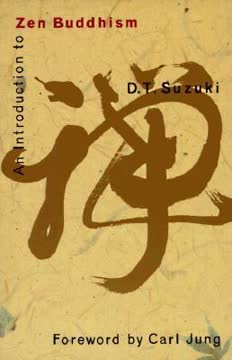
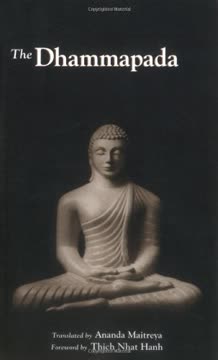
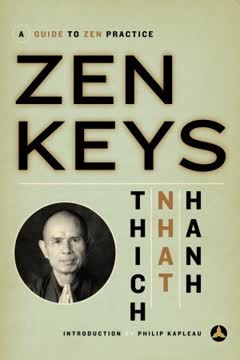

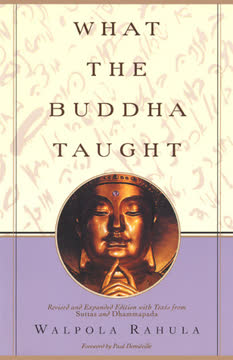
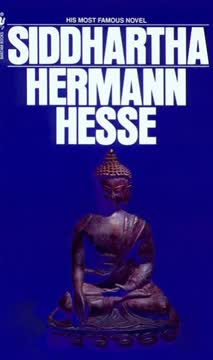
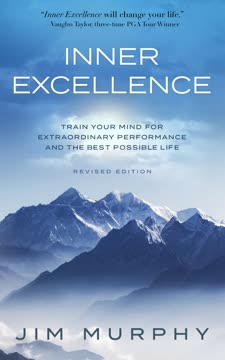
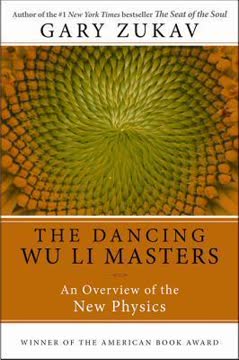
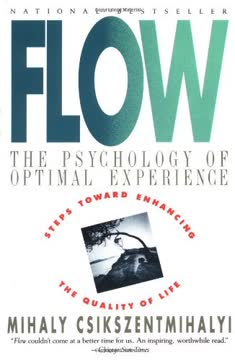
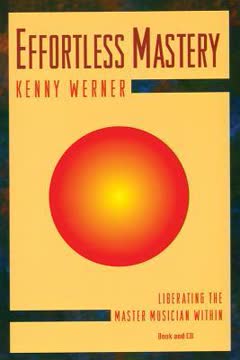
Download PDF
Download EPUB
.epub digital book format is ideal for reading ebooks on phones, tablets, and e-readers.
